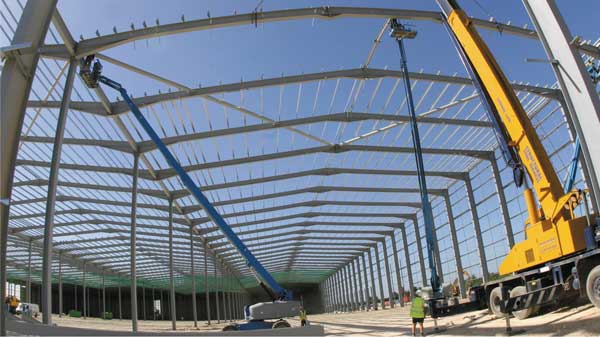Projects and Features
Purlins play vital role
Available in three section types, Z, C and M, light gauge steel purlins, rails and mezzanine sections are a ubiquitous component in a wide variety of structures where lightweight, high-strength structural support systems are essential.
Purlins are most often designed and manufactured to meet the specific needs of each individual project, with section type, depth, length and gauge being selected according to the project’s requirements.
Getting it right
Design and specification are crucial to the process, not only in ensuring that the final structure meets the necessary performance standards but also in delivering value for the end client; over-specified and the project could cost more than is necessary.
In the UK market of Great Britain (GB), comprising England, Scotland and Wales, the Construction Products Regulation (CPR) places legal obligations on manufacturers, distributors and importers of construction products used within the GB market to place the UKCA (UK Conformity Assessed) mark on their products where they are covered by a UK-designated standard.
The requirements of the CPR and UKCA marking apply to construction products used on a project irrespective of the design standard adopted for that project; for example, BS 5950 or BS EN 1993.
For fabricated structural steelwork, engineers, contractors and steelwork contractors should ensure that their specifications require only UKCA marked (or CE marked until 30 June 2025) products are used on their projects in GB.
Similar requirements apply in the EU (CE marking) and the UK market of Northern Ireland (CE and UKNI marking).
Execution
For any project, the required quality of fabrication, or Execution Class, must be specified according to the procedures set out in Annex C of BS EN 1993-1-1 and its associated UK National Annex. The Execution Class should be specified for:
- The works as a whole
- An individual component
- A detail of a component
The engineer is responsible for specifying the Execution Class for the structure (the works as a whole). If the Execution Class for components and details is different to that specified for the structure, the Execution Class for these should not be lower than that specified for the works as a whole and should be clearly identified in the execution specification.
For the majority of buildings constructed in the UK, EXC2 will be the appropriate requirement.
The engineer should always derive the Execution Class based on the design parameters appropriate to each project. The quality requirements to each Execution Class are listed in Table A3 of BS EN 1090-2 and can be reviewed by the engineer if desired.
As mentioned, there is a danger for solutions to be over-specified and incur unnecessary costs. For example, if a project has an Execution Class of EXC2 but the engineer requires full traceability (an EXC3 requirement) instead of the partial (or batch) traceability requirement of EXC2, rather than specifying EXC3 on the basis of achieving this single clause requirement, it is suggested that EXC2 is still specified but with the higher level of traceability added to the specification.
BS EN 1993-1-1 states that the selection of Execution Class should be based on the following three factors:
- The required reliability
- The type of structure, component or detail; and
- The type of loading for which the structure, component or detail is designed.
Guidance on straightforward procedure for determining the Execution Class for buildings is freely available on www.steelconstruction.info.
Getting the numbers right
With mandatory requirements covered, the engineer/designer needs to consider a number of additional factors in determining the specification and number of purlins required for a given application. Depending on what the purlins are being used for (roofs, side rails, mezzanine floors, etc.), these might include snow drifting, tiled roof, steep slope and wind loading.
Most purlin manufacturers will offer assistance in the design process, but Metsec leads the market with its dedicated software package, MetSPEC. Freely available for download, the package incorporates both British Standards and Eurocodes as well as the full range of Metsec purlin sizes to ensure that the specification process is as easy as possible.
The company also offers a comprehensive library of standard connections and macros for use with the Tekla Structures 3D modelling software.
Combined with expert technical support, these software packages ensure that the purlin specification process is as smooth and painless as possible, saving the engineer/designer time and ensuring that the end client receives value for money.
Metsec
is a Gold sponsor of
Steel for Life














